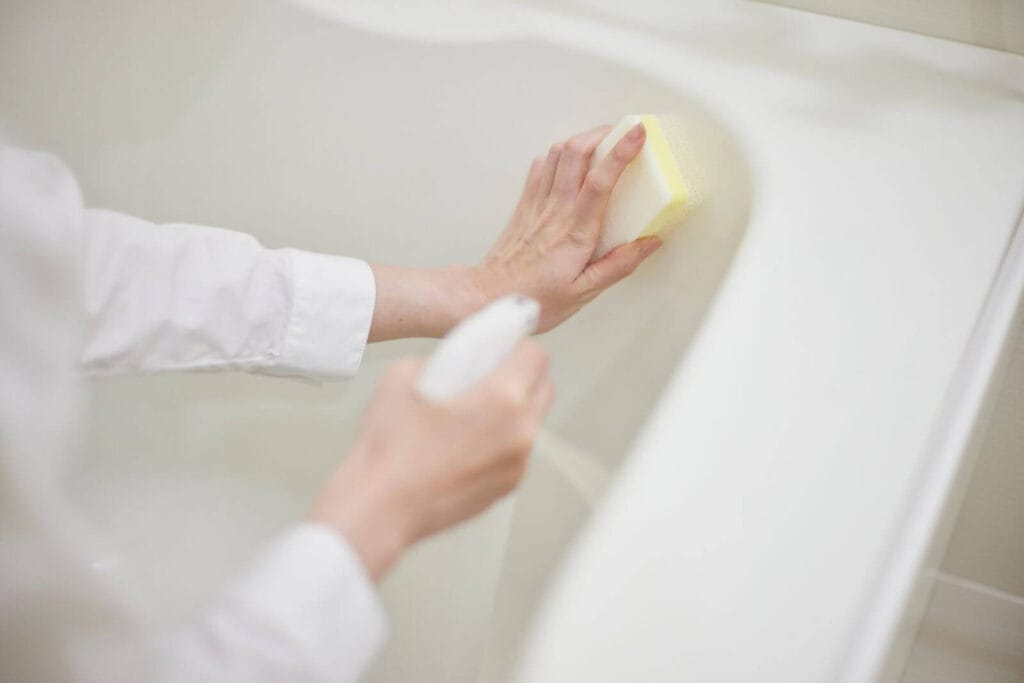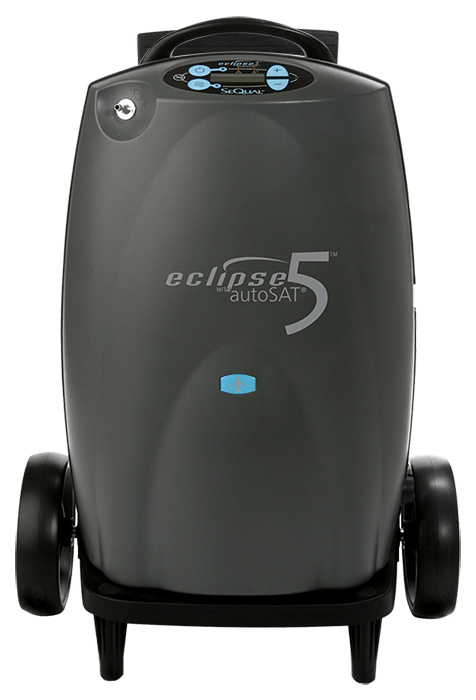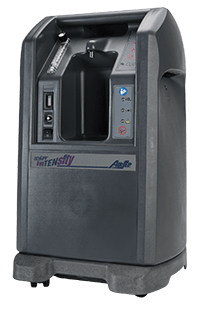
Having a walk-in bathtub in your home can greatly increase your safety and quality of life. A walk-in tub comes with benefits like a decreased risk of falling and increased ease of use, especially for those with mobility challenges. It also provides peace of mind to you and your loved ones in knowing that bathing safely allows you to age in place at home.
A walk-in tub can last a lifetime, but only if you take care of it. Maintaining a walk-in tub doesn’t require a strenuous cleaning schedule, but there are a few tips and tricks that will help you keep your tub in tip-top shape. Here’s everything you need to know about maintaining a walk-in tub so you can enjoy it for many years to come.
Cleaning supplies for walk-in tubs
You don’t need any special cleaners to keep your walk-in tub like new. A mixture of baking soda and vinegar is an effective tub cleaner if you want to avoid using chemicals. Foaming sprays specifically designed for bathroom use can easily remove soap scum if you need a more thorough cleaning. Other mild household detergents, like dish soap, can also be used.
A regular sponge and a microfiber cleaning cloth are good choices when you need to do some scrubbing. Soft brushes work quite well, too. If stretching and reaching is a challenge, consider getting a motorized brush with different brush heads. Many have adjustable lengths, so there’s no need to lean or stretch to scrub the tub walls. They come with soft-bristle brushes and cloth heads that do all the scrubbing so you don’t have to.
A few other supplies you may want to have on hand include glass cleaner and a squeegee if you have a glass shower surround. A calcium, lime, and rust cleaner can help keep your faucet looking shiny.
Cleaning products to avoid
There are some specific types of cleaning products you will want to avoid when maintaining your walk-in tub.
Avoid harsh chemicals and abrasive granules that can scratch or dull the surface of your tub. You should also avoid using harsh scrubbers with overly stiff bristles and metal and wire brushes that can scratch the surface of your tub.
Don’t use polishes or wax on your bathtub. It’s true that they can make your walk-in tub shiny and beautiful, but they can also make your tub slick, which can increase your chances of experiencing a fall.
Quick cleaning instructions
Cleaning your walk-in bathtub after each use reduces the need for deep cleaning. After your bath, simply use the shower wand to spray down the tub with warm water. If you use body oils, bath bombs, or other bath products, it’s a good idea to wipe out the tub with a sponge or a microfiber cloth so it isn’t slick the next time you get in the bath.
Weekly or monthly cleaning, depending on how often you use your tub, can also keep you from having to do too much deep scrubbing later. Use a mild cleaner and a soft cloth or brush to clean the entire surface of your tub.
SafeStep also recommends cleaning the door seal on a weekly basis with a little bit of rubbing alcohol. It prevents the buildup of soap scum, which has the potential to compromise the seal on your tub door over time.
Deep cleaning a walk-in tub
How you deep clean your walk-in tub depends on the type of tub you have.
Basic walk-in tubs without jets don’t require a special deep cleaning schedule as long as you follow the quick cleaning instructions every week or month.
Jetted walk-in tubs need a good deep clean every once in a while. American Standard recommends a monthly deep-clean regimen that includes the following:
- Fill the tub up to the seat.
- Use rubber gloves and safety glasses to avoid an injury from getting splashed.
- Add two tablespoons of dishwashing detergent granules and 1/2 cup of bleach to the water.
- Fill the tub the rest of the way with hot water until all the jets are submerged.
- Turn on the jets and run them for 15 minutes. Turn off the jets and let the tub sit for five minutes. Then, run the jets for another 15 minutes.
- Drain the tub and fill it with clean water.
- Run the jets for 15 minutes to rinse out the tub.
It is important to read the instructions in your tub’s manual before deep cleaning your bathtub, as some manufacturers recommend using different types of cleaners. For example, walk-in tub manufacturer Ella’s Bubbles recommends a mixture of two cups of water and two cups of white vinegar instead of using dishwashing detergent and bleach.
Cleaning a self-cleaning walk-in bathtub
Some jetted tubs have automatic self-cleaning features that can prevent the buildup of mold and mildew in the system. Others have a specialized ozone sterilization system that automatically kills bacteria, which can eliminate the need to clean your tub more frequently.
Even if your bathtub has self-cleaning features, it’s still a good idea to rinse it out after each use. You should also deep clean it every once in a while to prevent the buildup of body oils, soap scum, and other materials that can compromise the functionality of your tub.
Long-term maintenance
No matter what kind of walk-in tub you have, there are a few maintenance-related things you’ll want to be aware of.
If you notice that your faucet or showerhead is starting to develop calcium or lime buildup, a specialized descaling cleanser can be used. Just make sure you use it only on the faucet, as descaling cleansers can be hard on acrylic surfaces. Avoid soaking the faucet or showerhead in vinegar, which has the potential to erode the faucet’s finish.
If the water is draining slowly or the drain appears clogged, try removing the drain stopper and using a hair remover tool to get rid of any hair that has accumulated in the drain. If you don’t feel comfortable removing the drain stopper, call a knowledgeable family member or a professional to help.
Avoid abrasive products like Drano if your drain is clogged or flowing slowly, as they can damage your pipes. Always call a professional. They can assess the problem and provide you with a solution that won’t damage your plumbing or your bathtub.
If your tub has become scratched or dull over time, American Standard recommends restoring worn areas with an automotive cleaning compound.
When in doubt, follow the instructions in your walk-in tub manual
It’s always a good idea to look at the instruction manual if you’re unsure how to take care of your walk-in tub. Every bathtub comes with a manual that can tell you more about the cleaning materials you can use, the ones you can’t use, and how often you should clean your tub to make sure it stays beautiful and functional for a lifetime.








